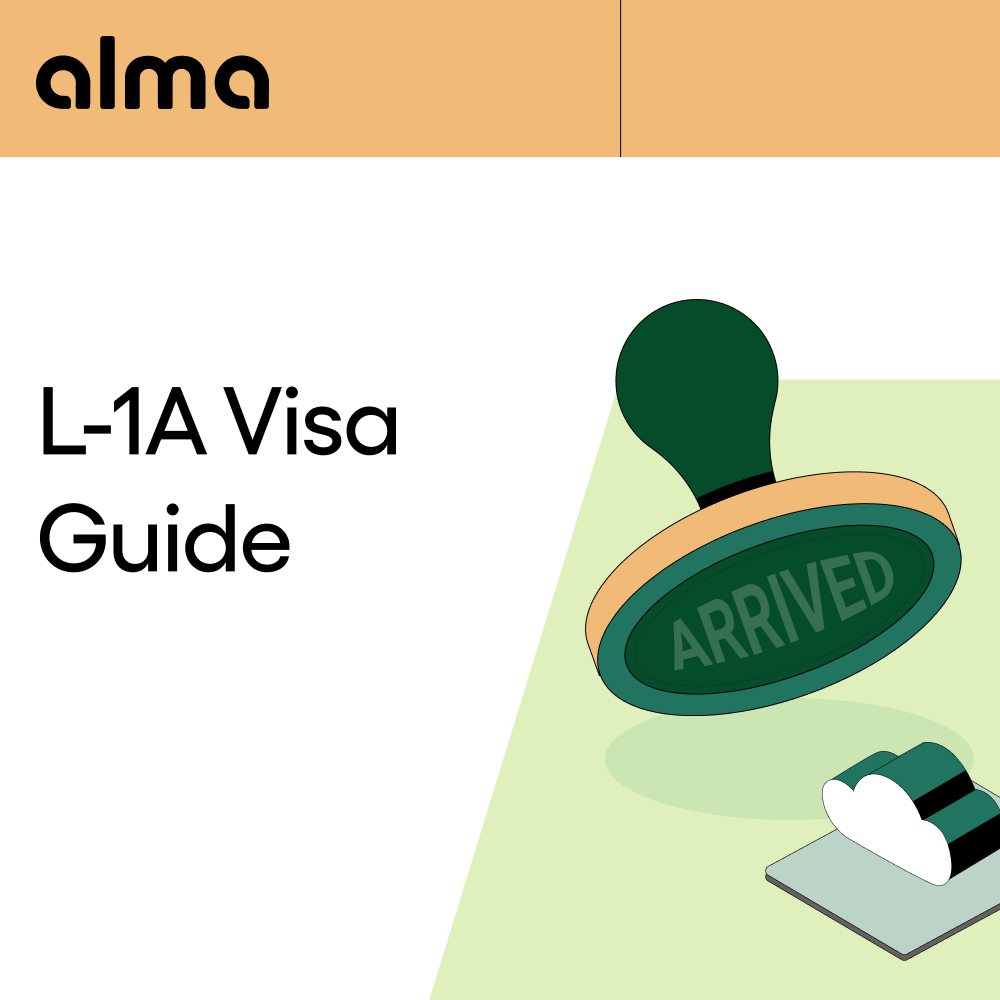- Nearly 400,000 H-1B approvals in FY 2024 – H-1B visa applications reached historic approval volumes, demonstrating continued strong demand for specialized talent across U.S. industries
- 94.6% approval rate for O-1 visas – Extraordinary ability workers achieve exceptional success rates, making properly prepared O-1 applications highly reliable for top talent
- 26% of STEM workers are foreign-born – International professionals form a critical foundation of America's technology and research sectors, filling essential skill gaps
- 3.4 years average green card processing time – Lengthy permanent residence timelines make expert legal guidance essential for navigating the transition from temporary to permanent status
- 785,000 approved petitions await visa availability – Massive backlogs underscore the importance of strategic planning and professional immigration counsel to maximize success
- 1.2 million employment-based temporary visas issued in FY 2024 – Robust visa issuance demonstrates the U.S. commitment to attracting global talent despite system challenges
Comprehensive data compiled from USCIS reports, Department of Labor analytics, and authoritative immigration research
Navigating the high-skilled immigration landscape requires understanding both opportunities and obstacles. Whether you're pursuing an H-1B specialty occupation visa, O-1 extraordinary ability status, or employment-based green cards, the statistics below reveal critical insights that should inform your immigration strategy. With Alma's immigration legal services, you gain access to expert attorneys who leverage these trends to achieve our 99%+ approval rate while delivering guaranteed two-week document processing.
H-1B Visa Approval and Demand Statistics
- Nearly 400,000 H-1B visa applications were approved in fiscal year 2024. The volume of H-1B approvals demonstrates sustained employer demand for specialized foreign talent. This substantial approval number reflects successful navigation of both the lottery selection process and subsequent petition adjudication. While the 85,000 annual cap (65,000 regular cap + 20,000 U.S. advanced degree exemption) limits new worker entries, the total approval figure includes extensions and transfers that don't count against the cap. Understanding this distinction helps applicants and employers plan strategic timing for their applications.
- 65% of H-1B approvals in 2024 were for renewal applications rather than new workers. Analysis shows that 65% of approvals went to workers already in the United States seeking extensions or employer changes. This pattern highlights the multi-year nature of H-1B employment and the importance of successful renewals for career continuity. For employers, this statistic underscores the value of retaining existing H-1B workers through the renewal process. Alma's H-1B extension services at $3,000 provide expert support for maintaining valid status without gaps.
- Denial rates for new H-1B petitions dropped to just 2% in FY 2022 from a high of 24% in FY 2018. The dramatic improvement in H-1B approval rates reflects both policy changes and improved application preparation standards. This shift from one-quarter denials to near-universal approval shows how critical proper petition preparation has become. While approval rates have improved, the low denial rate also means competition has intensified at the lottery stage. Working with experienced immigration counsel ensures applications meet the higher quality standards that have become the norm.
O-1 Visa Success Rates and Extraordinary Ability Trends
- 94.6% approval rate for O-1 visas in 2024 for extraordinary ability workers. The exceptional O-1 approval rate demonstrates that properly documented extraordinary achievement cases succeed at near-certain rates. This high success percentage makes the O-1 an attractive alternative pathway for top performers who want to bypass H-1B lottery uncertainty. The O-1 category encompasses both scientific/business achievement (O-1A) and arts/entertainment excellence (O-1B), providing flexibility for diverse talent profiles. Alma's O-1 visa services at $8,000 help applicants build compelling cases that meet USCIS's extraordinary ability standards.
- 56% quarter-over-quarter increase in EB-1A extraordinary ability petition filings in FY25 Q1. The surge in EB-1A petitions indicates growing awareness of self-petition green card pathways among high achievers. This dramatic growth reflects both increased demand for permanent residence and strategic shifts away from lottery-dependent visa categories. The EB-1A shares similar evidentiary standards with the O-1A, making it a natural progression for extraordinary ability workers.
Employment-Based Immigration and Green Card Backlogs
- 785,000 approved employment-based immigrant petitions are awaiting available visa numbers as of September 2024. The massive backlog of approved petitions reveals a critical bottleneck in the permanent residence system. These are cases where employers have already proven the worker's qualifications and received USCIS approval, but annual numerical limits prevent immediate green card issuance. This queue primarily affects workers from countries with high demand, creating years-long waits even after approval. Strategic planning with immigration counsel helps applicants understand realistic timelines and maintain valid status during extended waiting periods.
- 140,000 annual cap on employment-based immigrant visas across all five preference categories. The strict annual limit of 140,000 employment-based immigrant visas creates scarcity that drives extensive backlogs. This cap hasn't increased since 1990 despite significant growth in both the U.S. economy and global talent pool. The limitation applies across all categories from EB-1 extraordinary ability through EB-5 investors, forcing competition for limited numbers. Understanding category priorities and per-country limits becomes essential for realistic timeline expectations in green card planning.
- 3.4 years average processing time for employer-sponsored green cards in 2025. The extended processing period represents an all-time high, reflecting system capacity challenges and growing demand. This duration covers the multi-step process from labor certification through I-140 approval and final adjustment of status or consular processing. The lengthy timeline requires careful status maintenance, often involving H-1B extensions beyond the standard six-year limit. Alma's PERM labor certification services at $8,000 help initiate the green card process efficiently while managing the complex compliance requirements.
- 90% approval rate for employment-based green card applications in FY 2024. The strong approval rate demonstrates that properly prepared permanent residence applications succeed at high rates. This success rate applies across EB-1 through EB-5 categories when applications include complete documentation and meet all eligibility criteria. The 10% denial or RFE rate underscores the importance of thorough preparation and expert legal review before filing. Comprehensive petition development minimizes delays and maximizes approval probability in the multi-year green card journey.
Foreign-Born STEM Workforce Statistics
- 26% of STEM workers in the United States are foreign-born as of 2021. International professionals comprise over one-quarter of the STEM workforce, filling critical roles in technology, engineering, and research sectors. This substantial foreign-born representation reflects both U.S. demand for specialized skills and the effectiveness of high-skilled immigration pathways. Computer and mathematical occupations show even higher concentrations of immigrant talent, with some specialties approaching 30-40% foreign-born participation. These workforce statistics demonstrate why employers across technology industries rely heavily on business immigration solutions to access global talent pools.
- 1,582,808 active F and M student visa records in the United States in 2024. The record number of active student records represents a crucial pipeline for future high-skilled immigration. Many of these students will transition to H-1B status after graduation, converting their U.S. education into American work experience. The 5.3% year-over-year increase demonstrates sustained international interest in U.S. higher education despite immigration challenges. Recent graduates benefit from OPT work authorization that can bridge to H-1B status, making proper immigration planning essential during the final year of study.
- 381,140 foreign students received work authorization through practical training programs. The substantial number of OPT work authorizations highlights how international students extend their U.S. presence beyond graduation. OPT provides 12 months of work authorization for all students, with STEM degree holders eligible for an additional 24-month extension. This temporary status offers valuable time to secure H-1B sponsorship or build credentials for alternative visa categories. Alma offers STEM OPT support services at $250 to help students maintain valid status during this critical transition period.
Temporary Work Visa Volume and Distribution
- 1.2 million employment-based temporary visas were issued in fiscal year 2024. The substantial volume of temporary work visas encompasses H-1B, L-1, O-1, and other categories serving diverse employment needs. This million-plus issuance demonstrates the scale of U.S. employer reliance on international talent across industries. The figure includes both new petitions and renewals, reflecting the multi-year nature of most temporary work authorizations. Understanding the breadth of temporary work visa options helps applicants identify the most strategic pathway for their specific qualifications and career goals.
- 92.25% approval rate for L-1 intracompany transfer visa petitions. The exceptional L-1 approval rate makes this category highly reliable for multinational companies transferring executives, managers, and specialized knowledge workers. This near-certain approval rate reflects the established relationship requirements that pre-qualify eligible companies and workers. L-1 visas offer advantages including no annual cap, dual intent for green card pursuit, and work authorization for spouses. For multinational employers, Alma's L-1 visa services starting at $6,000 provide efficient processing with our guaranteed two-week document turnaround.
- 18% of the U.S. civilian labor force consists of immigrant workers as of 2024. Foreign-born professionals represent nearly one-fifth of workers, totaling 30.6 million people across all industries and skill levels. This workforce participation rate has more than tripled since 1970, when immigrants comprised just 5% of the labor force. The growth reflects both increased immigration volumes and the integration of foreign-born workers throughout the U.S. economy.
Frequently Asked Questions
While specific lottery selection rates vary annually based on registration volumes, the nearly 400,000 approvals in FY 2024 demonstrate the program's scale. The 85,000 annual cap for new workers means selection rates typically range from 25-50% depending on the year. To maximize success, ensure your employer registers properly during the brief March window and prepares a robust petition immediately upon selection.
The O-1 achieves 94.6% approval rates (FY 2025 Q2) for properly prepared cases, significantly reducing uncertainty compared to H-1B lottery odds. The O-1 requires demonstrating extraordinary ability or achievement but offers substantial benefits including no annual cap, no lottery, and faster processing timelines. For professionals with strong credentials in their field—published research, significant achievements, recognition, or leadership roles—the O-1 provides a strategic alternative. Entrepreneurs and founders, researchers, and STEM professionals often qualify with proper evidence compilation and legal presentation.
While the 785,000 approved petitions demonstrate strong intent to pursue permanent residence, the transition timeline averages 3.4 years for processing. The 90% approval rate for employment-based green cards shows that properly prepared applications succeed reliably. The key challenges involve extended waiting periods rather than denial risk. Strategic planning includes initiating PERM labor certification early in H-1B status and understanding extension options beyond the standard six-year limit for workers with approved I-140 petitions.
Current data shows exceptional approval rates for properly prepared cases across categories: L-1 transfers at 92.25%, O-1 visas at 94.6%, employment-based green cards at 90%, and new H-1B petitions at 98% (post-lottery selection). These success rates reflect improved application quality standards and stable adjudication criteria. The key differentiator isn't approval rate variation but rather access to the category—H-1B requires lottery luck, while O-1 and EB-1 demand extraordinary credentials. Alma's 99%+ approval rate across all visa types reflects our comprehensive case preparation and attorney expertise.
The 11.3 million pending cases at USCIS create extended processing times across most categories. Premium processing (15-day guaranteed adjudication) remains available for certain visa types at additional cost, offering timeline certainty for time-sensitive cases. For green cards, the 3.4-year average processing reflects system capacity constraints rather than case-specific issues. Strategic planning includes maintaining valid temporary status throughout the green card process, typically through H-1B extensions or alternative work authorization. Understanding realistic timelines prevents status gaps and enables proper career planning during the extended permanent residence journey.



.png)

.png)


